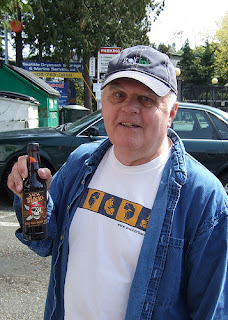My dad had a stroke last Thursday night. Actually, he had three strokes--two "mini" ones while at home and a third, more serious one shortly after he and my mom arrived at the hospital.
My mom tells me that if they hadn't been at the hospital when the third one hit, he likely would have died.
 I don't know enough about strokes to be able to tell you how severe this last one was. Regardless, it was bad enough that he had to have surgery to remove the clot that caused the stroke. Also, it seems as though he suffered some amount of trauma/paralysis to his left side. His mind seems OK--he hasn't suffered any memory loss, nor has he lost the ability to communicate or understand language--which is a miracle in and of itself, but he's hardly in the clear at this point. He's still in the ICU and we're unsure as to when he will be moved out of it--or when he will be discharged (likely to some sort of therapy/treatment center until he's strong enough to return home).
I don't know enough about strokes to be able to tell you how severe this last one was. Regardless, it was bad enough that he had to have surgery to remove the clot that caused the stroke. Also, it seems as though he suffered some amount of trauma/paralysis to his left side. His mind seems OK--he hasn't suffered any memory loss, nor has he lost the ability to communicate or understand language--which is a miracle in and of itself, but he's hardly in the clear at this point. He's still in the ICU and we're unsure as to when he will be moved out of it--or when he will be discharged (likely to some sort of therapy/treatment center until he's strong enough to return home).I've been devastated by this surprising turn of events, as have my mom and brother. Ever since I heard the news, I've been alternating between bawling my eyes out and feeling like a zombie.
My original plan was to keep this to myself, and to continue updating this blog as I always do. This morning, though, I decided it would be best to take a few days off--especially since David (my husband) and I will be flying home late tonight and the next few days are sure to be filled with trips to see my dad, phone calls to family and friends and hopefully a bit of rest.
I'm not expecting to stay away for long. In fact, I plan on returning to some sort of normalcy--on this blog, at least--next week (thanks in large part to a slew of posts that were written before all of this happened).
Anyway, I just wanted all of you to know so that you won't worry that the lack of posts over the next few days means that something has happened to me or that something is happening to this blog.
Also, I'd greatly appreciate it if any of you would be able to spend even one second today or tomorrow or whenever you're able to send positive energy/thoughts/vibes my dad's way.










